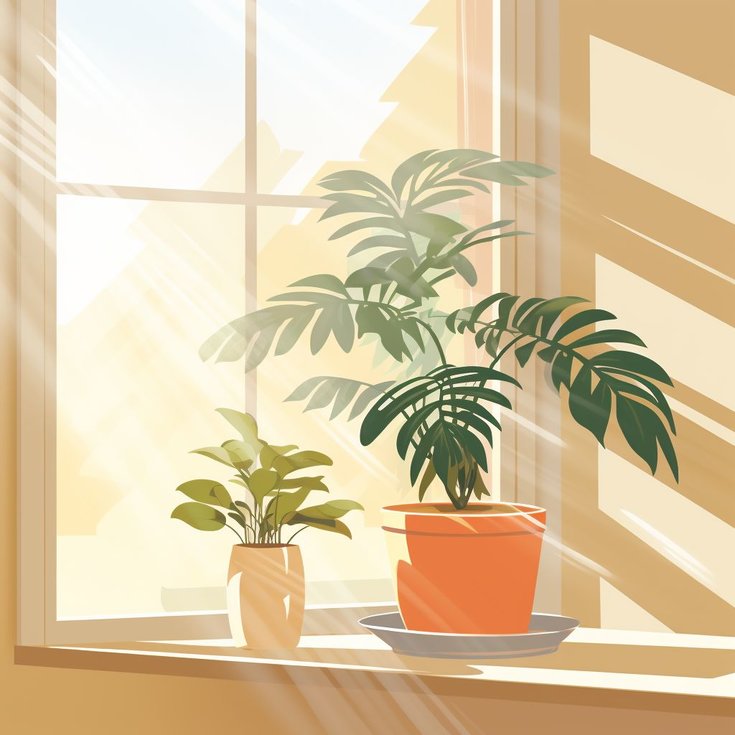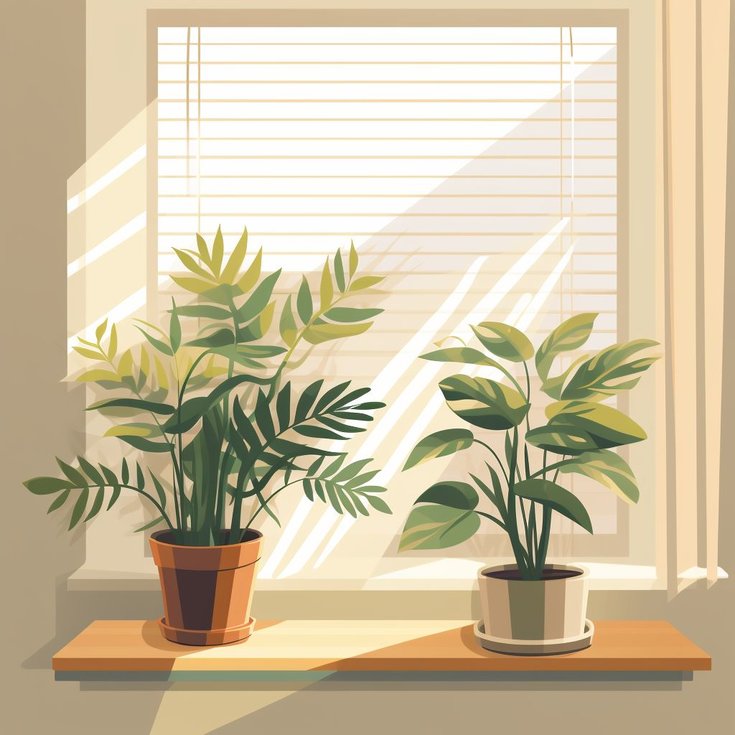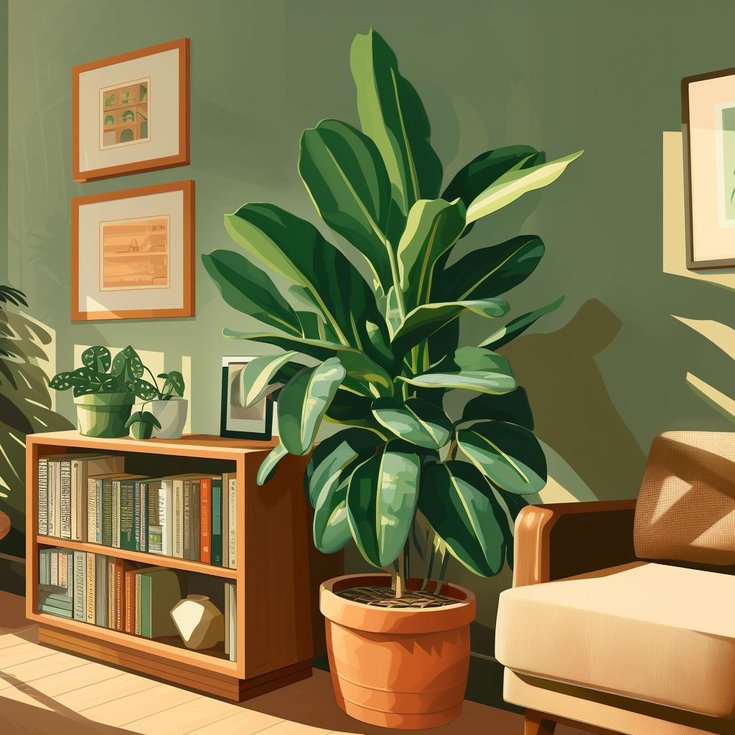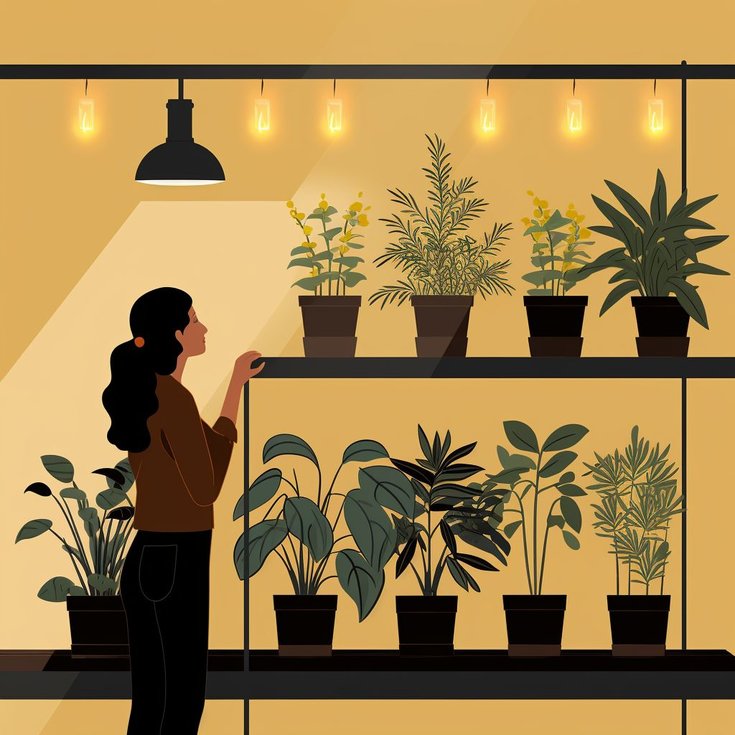The Ultimate Guide to Lighting for Your Houseplants
Houseplants can transform any interior space into a lush and vibrant haven. However, one of the most important and often overlooked factors in keeping houseplants healthy is providing the right amount of light. In this guide, we'll walk you through how to identify different lighting conditions, choose the best spot for your plant, and adjust your care according to the changing seasons.
Identifying Light Conditions
Direct Sunlight
Direct sunlight means that the sun's rays are shining directly on the plant without any obstruction. You can identify a direct sunlight spot by observing where the sun shines brightly without any obstructions, such as curtains or shades. Plants that require direct sunlight should be placed near a south-facing window (in the Northern Hemisphere) or a north-facing window (in the Southern Hemisphere), where they will receive the most intense and prolonged exposure to the sun.

Bright Indirect Light
Bright indirect light is when the sunlight doesn't directly hit the plant but is still bright and abundant. This lighting condition can be found near a window with sheer curtains, or in a spot that's close to a window but not directly in the sun's path. A good way to test for bright indirect light is to place your hand between the plant and the window. If your hand casts a shadow, but the light doesn't feel intense, it's a good spot for bright indirect light.

Medium Light
Medium light falls right between low light and bright indirect light. In a medium-light setting, a room will be well-lit but not overly bright, and the plant won't receive direct sunlight. An example of medium light is an area near an east or west-facing window where the sunlight is filtered through curtains or partially blocked by furniture or other objects. Medium-light plants typically require more light than low-light plants but don't need the intensity of bright indirect light.

Low Light
Low light is when a room is illuminated, but not by direct sunlight. It's important to note that low light doesn't mean no-light. Low-light areas are usually farther from windows or in rooms with minimal natural light. While many plants can tolerate low light, they still need some exposure to light to thrive.

Evaluating Your Plant's Light Needs
Research Your Plant
Start by researching your plant's specific light needs. If you purchased your plant from easyplant, it should come with a brochure that states the preferred light conditions for your plant. You can also find this information on the product pages and plant care pages on the easyplant website. For convenience, the brochure includes a QR code that you can scan to be taken directly to the plant care page for your specific plant. If you didn't purchase your plant from easyplant, you can also look up its requirements online.
Observe Your Plant
Monitor your plant for signs of stress or discomfort. If it's receiving too much light, its leaves may become scorched, faded, or show signs of sunburn. If it's not getting enough light, it may become leggy, have slow growth, or display yellowing leaves.
Experiment
Don't be afraid to move your plant to different locations to see where it thrives best. Adjust the lighting conditions as needed and observe how your plant responds. Keep in mind that it can take time for plants to adjust to a new location. Be patient and give your plant a few weeks to adapt before making any further changes.

Adapting to Seasonal Changes
As the seasons change, so does the angle and intensity of the sunlight. In the summer, the sun is higher in the sky and provides more intense light, while in the winter, the sun is lower, and the light is less intense.
Adjust Plant Placement
During the summer, you may need to move your plants slightly away from the window or provide some shade to prevent sunburn. In the winter, consider moving your plants closer to the window to maximize light exposure.
Supplement with Artificial Light
In the winter, when natural light is scarce, you can use artificial lights like fluorescent lights or LED grow lights to supplement your plant's light needs.
Rotate Your Plants
To ensure even light distribution and prevent lopsided growth, rotate your plants every few weeks, especially if they are placed near a window.

Ready to Find the Perfect Spot for Your Plants?
Understanding and providing the right lighting for your houseplants is crucial for their health and well-being. By identifying the different lighting conditions, evaluating your plant's needs, and adapting to seasonal changes, you can create a thriving indoor garden that brings joy and beauty to your space.